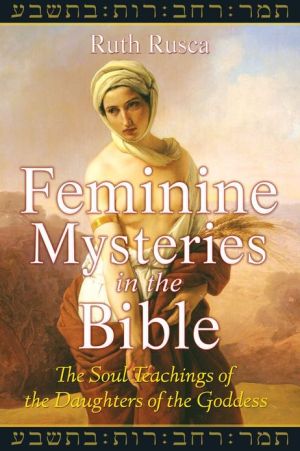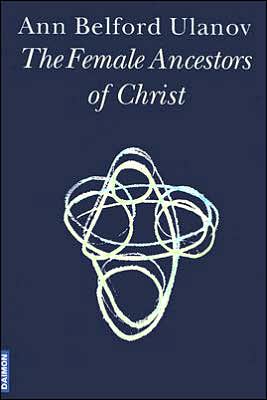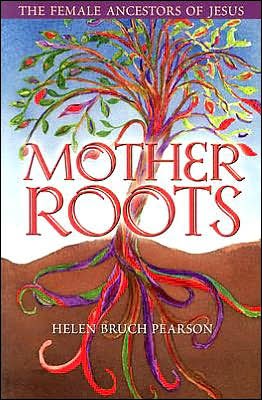Feminine Mysteries in the Bible: The Soul Teachings of the Daughters of the Goddess
An exploration of the repressed, esoteric feminine mysteries in the Bible through the lives of four women, all archetypes of the sacred prostitute\ • Shows how these four archetypal women represent the four stages of development of soul consciousness\ • Reveals how the fear of the power of the sacred prostitute led to a rejection of female sexuality and a destructive dualistic notion of men and women\ • Explains how the dogma of the Immaculate Conception represents the repression of the...
Search in google:
Four archetypal women in the Bible--Tamar, Rahab, Ruth, and Bathsheba--represent the transformative power of the feminine life force, and Mary, mother of Jesus, is the quintessence of these four women. This book exposes the Immaculate Conception to be a male invention that has subverted the divine feminine in Christianity.
INTRODUCTION\ Not only were the four foremothers transgressive, they also share a “sacred prostitute” or “harlot priestess” nature. Barbara Walker defines “Holy Virgin” as the harlot priestess of Ishtar and of Aphrodite. The title did not mean physical virginity, but rather “unwed.”\ The function of such “holy virgins” was to dispense the Mother’s grace through sexual worship; to heal; to prophesy; to perform sacred dances; to wail for the dead; and to become Brides of God.3\ In Canaan, Babylon, and Palestine they were called kadesha, which means “holy one,” and this is the title given to Tamar in Genesis 38:21. In the Italian Pontifical Bible (La Sacra Bibbia), however, Tamar is instead referred to as a “public woman,” and, as the term indicates, one of those “wretched women” who exposed themselves to the public lust in the temples of “obscene” pagan cults. This statement reflects the profound separation between the sexual and the sacred nature of women. The sacred prostitute’s sexual nature has been rejected and split off from the image of Mary. But Mary was also once called kadesha. The Catholic Church has created an image of the Virgin purified of sensual, joyful sexuality, divorced from her instinctual feminine ground. It is an image that conforms to the masculine experience. The Vatican still condemns sexuality as a sin when not practiced within the sacred bond of matrimony, and even then only for the purpose of procreation.\ The first experience of the divine in its masculine form is an experience of separation, as we see in the story of the Garden of Eden. This experience divided the female nature; one part became physical and despicable, the other spiritual and unobtainable. I believe that for a woman these two elements are never separated. For many women, the image of the sacred prostitute, the Holy Virgin, the harlot priestess, expresses most unequivocally the mystery of the oneness of body and spirit through the soul. In her book The Sacred Prostitute, Nancy Qualls-Corbett states:\ Yet the sacred prostitute remains a mystery, in large part because our modern attitude makes it difficult for us to grasp what we see as a paradox in her image: her sexual nature was an integral aspect of her spiritual nature. For most of us that conjunction is a contradiction. In ancient times, however, it was a unity.4\ Out of sexual union evolve the experiences of conception, pregnancy, birth, and nursing, which are physical as well as sacred processes for women that men do not share in. In this light, the sacred prostitute becomes the bride of God. She is the physical vessel containing the divine dimension, expressing the mystery of sacred marriage and the possibility of new life, both physically and psychologically. It is the sexual act, which overcomes duality, wherein two become one. This is the ecstasy of orgasm, a moment in time when the boundaries of egos collapse and the divine unity can manifest. It is the most direct physical avenue to divine manifestation and, as such, the most overwhelming. It is not surprising that humankind has erected taboos and rituals around the sexual act. But when it is split off from matter to become “free of original sin,” which is the intention of the Church in its dogma of the Immaculate Conception, it has lost its oneness.\ Can we grasp the meaning of the sacred prostitute with our modern outlook? She is the vessel of the indestructible life force; she mediates between the human and the divine. She is the link to our instinctual roots. She is the keeper of the wisdom of the Goddess. She is the teacher of the transformative power of the soul. She is the unity of body and spirit made manifest. She embodies love. In and of herself, she is the One. She is a soul-teacher. Barbara Walker, in her book The Woman’s Encyclopedia of Myths and Secrets, informs us that the holy virgins or temple harlots were “soul-teachers” or “soul-mothers,”the alma mater. The word alma means the living soul of the world, identical to the Greek psyche and the Sanskrit shakti. In many old songs and verses, Mary is still called the Alma Mater. We have lost our soul-teachers; the image of God has lost its female soul, once represented by Sophia (in the Gnostic view), the source of his power and the spirit of female wisdom.\ This schism and the ensuing loss have damaged our lives and the life of our Mother Earth and all her creatures. We yearn to be reunited with our souls. Throughout the years I worked on the theme of the four biblical women, I experienced them as my own soul-teachers: powerful, wise guides along the sacred road of life. In acknowledging the priest as the God’s designated delegate in the tending of the soul, we exclude the goddess-delegate, the priestess as soul-teacher. The Vatican has declared that women will never stand before the altar, because the priestess represents an archetypal female pattern, which stirs up powerful images of temple harlots and sacred prostitutes.\ What does it mean to be a sacred prostitute or a harlot priestess today? It reflects a soul attitude that embraces body and spirit as one and recognizes the sacredness of both dimensions. It is a surrender of our ego power to the mystery of our feminine essence. It is an alignment with divine will through the heart. It is a sacred exposition of our whole being. It is a complete and profound trust in the soul-teacher.
Foreword Christine Downing Downing, ChristineIntroduction How This Book Came to Be 1Pt. 1 Mythic Dimensions of the Historical Periods of the Four Women1 The Patriarchs 182 The Judges 243 Prophets and Kings 324 The Feminine Divine and the Reclaiming of Wholeness 40Pt. 2 The Stories of Tamar, Rahab, Ruth, and Bathsheba: A Symbolic Interpretation5 Tamar, the Sacred Prostitute 446 Rahab, the Meretrix 607 Ruth, Redeeming the Soul 808 Bathsheba, the Unfinished Story of the Daughter of the Goddess 95Pt Three The Conception of Mary: A Symbolic Interpretation of the Apocryphal Legend9 The Parents of Mary 112Epilogue: Mary Magdalene - The Soul-Teacher in the New Testament: Addition and Completion to Feminine Mysteries of the Bible 119Notes 127Bibliography 132Index 136
\ Thomas Moore“In this powerful and much needed book, Ruth Rusca focuses on two neglected dimensions of the Bible: its depth and its rich presentation of feminine mysteries. I particularly appreciate the way she weaves together her own intimate experience of life with her insights into the biblical women. Imagine how culture itself could change for the better if people read the Bible for depth of insight rather than proof of their prejudices and for a theology of the feminine rather than the usual lopsided emphasis on men. For these important reasons I strongly recommend this enlightening book.”\ \ \ \ \ The Midwest Book Review"Women's studies collections will find [this] an excellent pick."\ \ \ New Testament Abstracts"Rusca concludes that Mary Magdalene (the bride and companion of Christ, his female side, who is love made visible) has now been sent as a divine messenger because the other Mary has not been understood in her feminine wholeness."\ \ \ \ \ From the Publisher\ "Rusca concludes that Mary Magdalene (the bride and companion of Christ, his female side, who is love made visible) has now been sent as a divine messenger because the other Mary has not been understood in her feminine wholeness."\ \


